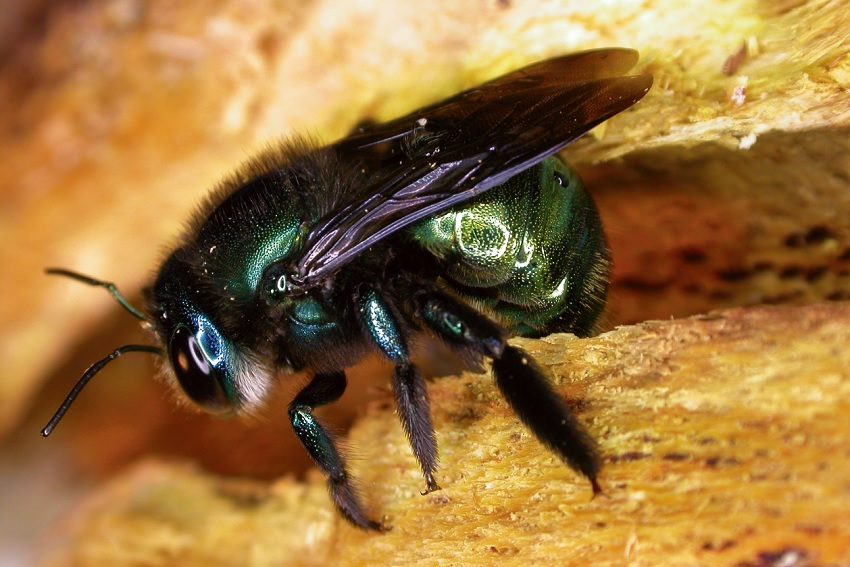The critical flight of the green carpenter bee

Kangaroo Island’s iconic green carpenter bee is under threat. The native bee, which was once found in mainland Australia but is now relegated to Kangaroo Island, would be lucky to survive without the help of a conversation project currently underway.
Although not officially listed as endangered, repeated bushfires on Kangaroo Island destroyed the large native bee’s soft wood nest substrates, as the bee needs soft wood to make its nests. South Australian Museum’s Dr Remko Leijs and his team are introducing artificial nest substrates for the iconic Kangaroo Island bee in areas affected by bushfires.
Leijs says the bee disappeared from mainland South Australia and Victoria 100 and 80 years ago respectively due to land clearing and bushfires. Over time there has been a gradual decline in numbers toward the west of Kangaroo Island. He says the bee was common in the Grampians until 1937.
“I know that because people collected them and they’re in the Victorian Museum,” Leijs says. “After that there was nothing, and that coincides with a large scale bushfire in the Grampians. If you go to that area you can see the Grampians has lots of natural vegetation and all around it is cleared.
“They rely on a number of nesting substrates that they can make their nests in. It needs to be soft, on Kangaroo Island that’s mainly flowering stalks from grass trees and dead Banksia trunks.”

The artificial nest substrates are placed in fire-affected areas for the bees to excavate their own nests. Currently there are more than 300 artificial substrates set up on Kangaroo Island. To safeguard the species, the project needs to put up 300 new substrates per year, which costs $5000 per year to produce, place and inspect. These substrates minimise the risk of losing future numbers when a bushfire hits and could be used to reintroduce the species in areas where it became extinct.
Unlike the introduced honey bee, the green carpenter bee is a buzz pollinator and many native plants rely on the bee for pollination and seed production.
“They’re important pollinators because they are quite large bees, therefore they need to visit lots of different plants to collect the pollen; they go to lots of different species of flowers. That’s just the biological value of the bees. They are very iconic large bees, with metallic colours, and during surveys we did that involved Kangaroo Island locals, we know it’s important for people to see them as well.”

Leijs and his team know how to save the bee, but need financial help to make sure it happens. To support the project, contact Remko Leijs at the South Australian Museum.
“So far, we’ve got some money from societies like the Royal Society or the Nature Foundation, these sorts of organisations. We know how to do it and it all works, we just really need to find long-term secure funding.”
The Adelaide Review is a media partner of the South Australian Museum